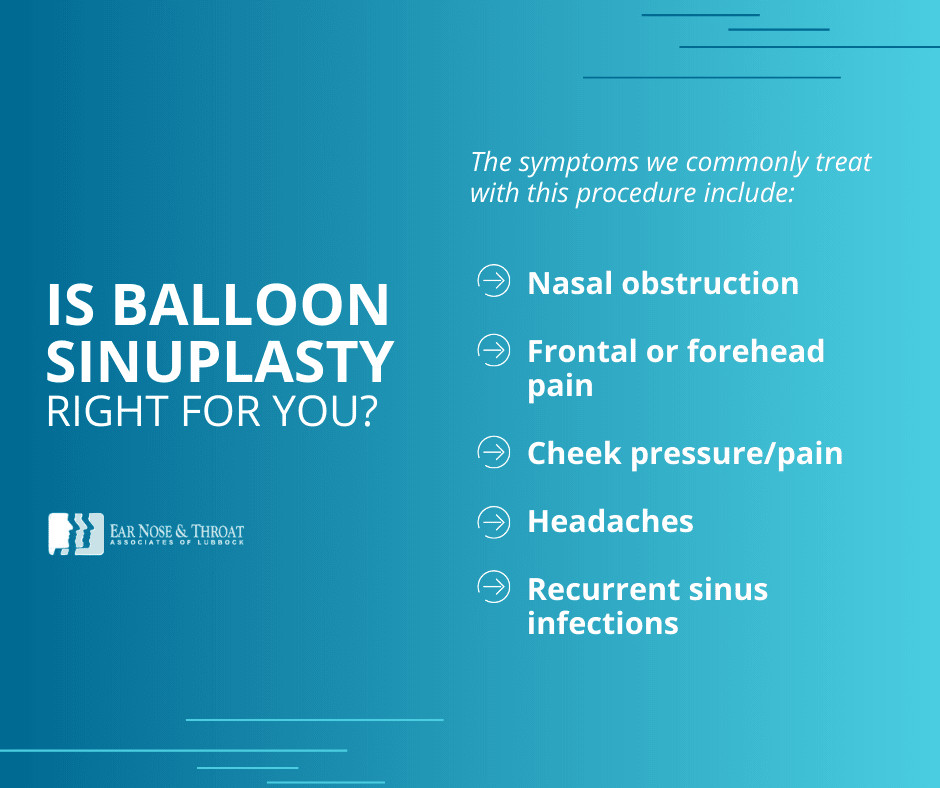Does A Balloon Sinuplasty Hurt? What You Need to Know

Sinus problems leave you feeling miserable.
Chronic sinus issues like infections, pain, pressure, and headaches seem inescapable with any type of allergy or irritation.
But why do some people seem to experience these symptoms regularly while others only rarely struggle with sinus problems?
Yes, people who are prone to sinus issues may have more sensitivity to allergens and viruses — but they also likely have smaller openings in the sinuses which makes even a small irritation feel much worse. And if this explains why your sinuses are always flaring up, a balloon sinuplasty may be just what you need.
Unless it hurts.
In which case, you’re not so sure.
Take a deep breath… if you’re not too congested. Balloon sinuplasty is not a painful procedure. To put your mind at ease, we’ve explained what most patients experience — and why the procedure works to start with!
Why Balloon Sinuplasty?
The sinuses are air-filled pockets within the skull. These pockets need a way to aerate. They do this through small crevices into the nose itself. Patients with chronic sinus problems like infections, pain, pressure, headaches typically have narrowed openings between the sinuses and the nose.
Because these crevices are narrow, they’re more easily occluded with any type of allergy or irritation. In order to find relief, they need wider entrances into the sinus cavity. The balloon enlarges these small openings.
How Balloon Sinuplasty Works
This procedure is extremely low-pain because we start by numbing the nose entirely. Once the nose is completely numb, we pass a balloon through the “ostia” (the openings into the sinuses).
We dilate the balloon for about 10 seconds, deflate it, and remove it. During this short period of inflation, the balloon widens the bony entrance from the nose into the sinus cavity.
Each person has six of these openings. We can open all — or whichever the patient needs.
When we dilate the balloon, we actually move these small bones permanently. But it’s not as dramatic as it sounds. The bones in your nose aren’t what we typically associate with solid bone. Instead, these are paper-thin bones (think fingernails) that move easily.

Does Balloon Sinuplasty Hurt?
This is a low to no pain procedure for patients. We take about 20-30 minutes to fully numb the patient before we begin. We start with all-topical numbing agents — using both decongestants and anesthetics to thoroughly numb the nose. We then inject a numbing agent into the nose. But by that point, patients don’t feel it.
When we insert the balloon and dilate it, some patients describe the feeling as a slight pressure. Some people feel a release of pressure because the sinuses finally open. Other patients don’t feel anything — they don’t even flinch.
If you feel pressure, the location depends on which sinus we’re dilating. When we dilate the frontal sinus, you may feel pressure near the eye. When we dilate the maxillary/cheek sinus, you’ll feel pressure in the upper teeth. When we dilate the sphenoid sinus, sometimes you feel pressure in the back of the head to varying degrees.
Whatever the feeling, it only lasts for about 10 seconds per sinus.
For some, this compares to a dental procedure — you’re awake, numb, and maybe a little uncomfortable occasionally, but with the right medication, you don’t feel pain.
For most people, their only complaint is they didn’t do it sooner.
Is Balloon Sinuplasty Right For You?
The symptoms we commonly treat with this procedure include:
- Nasal obstruction
- Frontal or forehead pain
- Cheek pressure/pain
- Headaches
- Recurrent sinus infections
We always begin treating these symptoms with medical therapy. If medications are ineffective, we take a CT scan and confirm the patient is a good candidate before we opt for a balloon sinuplasty. If a patient qualifies for balloon sinuplasty, the procedure is almost always covered by insurance.
Related: What Does a Balloon Sinuplasty Cost With & Without Insurance?
Is Balloon Sinuplasty Proven Safe?
While the concept of using a balloon for medical treatment can seem novel to some, it’s nothing new in the medical world. The balloon for sinuplasty has been around for about a decade, but cardiologists have been using a similar balloon for artery dilation for much longer.
There are several types of balloons available, but we use the type we feel is safest for patients. It’s been tested tens of thousands of times with almost zero complications. In fact, the type of balloon we use is so good, other companies blatantly copyright infringe and pay a royalty for every product they sell. It’s the best.
Both the balloon and the guidewire we use to insert it are extremely gentle. In fact, the guidewire won’t even break an egg yolk. It’s an extremely safe procedure for the patient.
If you’re struggling with chronic sinus problems and think a balloon sinuplasty might be right for you, don’t let the fear of pain stop you. Overall, it’s a highly effective, minimal pain, and low-risk procedure.
Dr. Cuthbertson is a physician at Ear Nose & Throat Associates of Lubbock. He joined the team at ENT Lubbock from Houston, where he was chief resident of the prestigious Bobby R. Alford Department of Otolaryngology at Baylor College of Medicine. He is board certified in Otolaryngology and Head & Neck Surgery and has quickly built a reputation, not only as an extremely skilled surgeon, but as an approachable and compassionate clinician adept in the newest standards and technologies. Learn more about Dr. Cuthbertson.
Categories:








